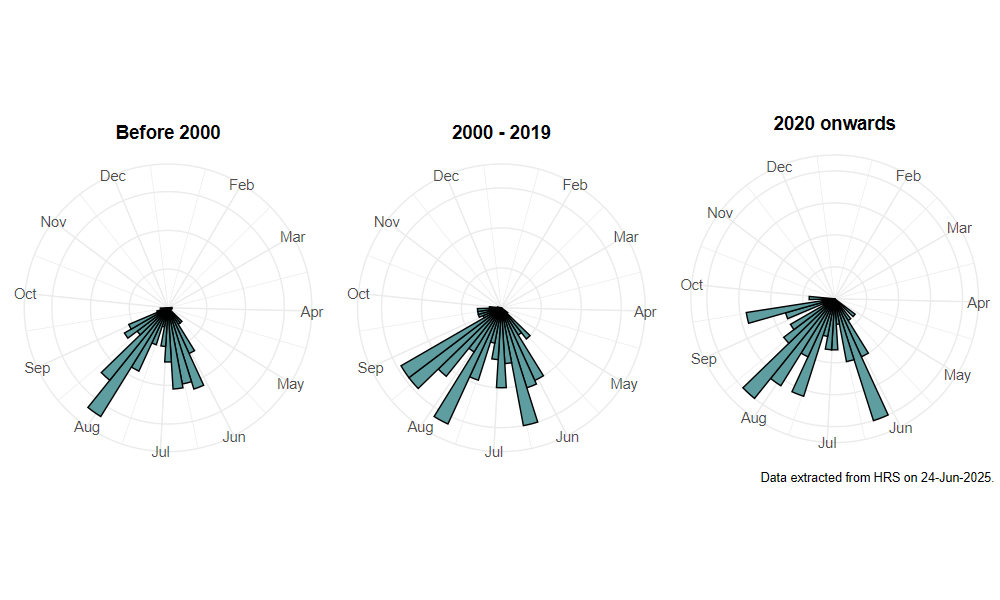Chrysotoxum elegans Loew, 1841
Identification
Identification difficulty = 3. ![]()
![]() according to Ball & Morris, 20241
according to Ball & Morris, 20241
Biology
A larva of this species was found beneath a stone in grassland. It is believed that larvae of this genus feed on ant attended root aphids in ant nests. The adult occurs in a variety of well drained, grassy situations ranging from woodland edge and scrubby downland in south-east England, to open cliff-tops in the south west. Adults fly low and fast over low vegetation and visit flowers, including white umbels and buttercups Ranunculus sp.
Flight period
The following plots show the number of unique records per week excluding those reported to be of immature stages.

Status
Lower Risk (Nationally scarce) - Ball & Morris, 20142. Rare (RDB3) - Falk, 19913 and Shirt 1987.
Distribution
This is a southern species that is mainly found in coastal localities, especially along cliff tops such as on the Gower Peninsular and on the south coasts of Devon and Cornwall and also on chalk in Cambridgeshire. Most inland locations are south-facing Chalk grasslands. It seems to have been recorded more frequently since 2000 and there is some evidence of range expansion.

Trends
The following plots show the Frescalo TFactor vs year and a map of the rescaled frequency (all records) for the species.
-
Ball, S., & Morris, R. (2024). Hoverflies of Britain and Ireland. WILDGuides (3rd ed.). Oxford: Princeton University Press. ↩
-
Ball, S., & Morris, R. (2014). A review of the scarce and threatened flies of Great Britain. Part 6: Syrphidae. ( No. 9). Species status (pp. 1–130). Peterborough: JNCC. ↩
-
Falk, S. (1991). A review of the scarce and threatened flies of Great Britain. ( No. 39). Research and Survey in Nature Conservation (pp. 1–194). Peterborough: NCC. ↩